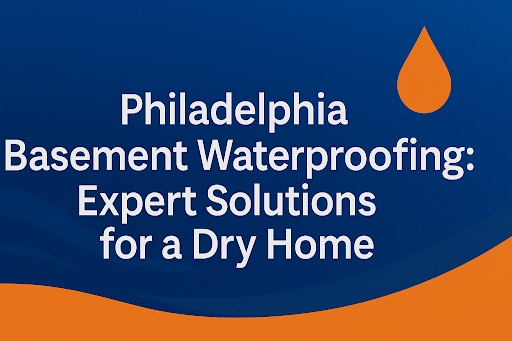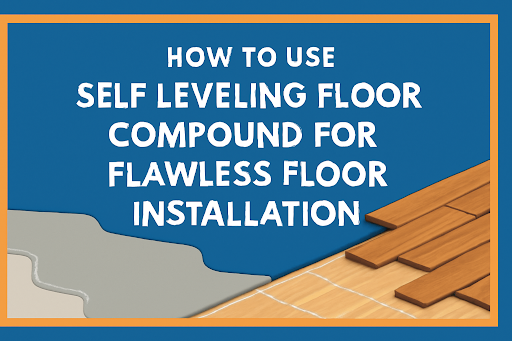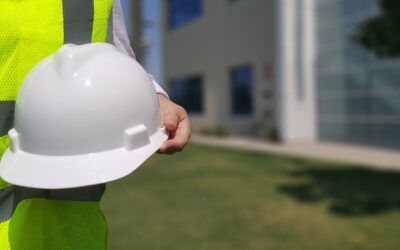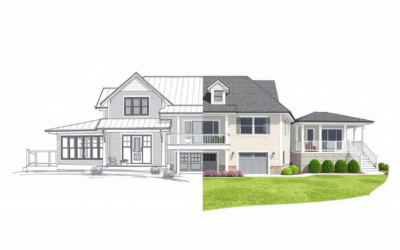Fiberglass flat roofing, also known as Glass Reinforced Polyester (GRP) roofing, is a popular flat roofing solution for commercial and residential buildings due to its durability, strength, and long-lasting performance. Roofing materials are an essential component of any building as they protect the structure from the weather’s elements, enhance its aesthetic appeal, and improve energy efficiency. Choosing the right roofing material is important as it can affect the lifespan, durability, and overall performance of the roof. Different materials are used for roofing purposes including asphalt shingles, metal, and clay tile. One of the most popular roofing materials for flat roofs is fiberglass.
GRP roofing is made of glass fibers and polyester resin that are combined to form a tough and flexible material that can withstand harsh weather conditions, UV rays, and chemicals.
In this article, we will go over the features and steps of installing fiberglass flat roofing. Whether you are a DIYer, contractor, or just interested in getting familiar with this amazing material, this article is for you. So let’s begin!
Figure 1
Where to Use Fiberglass Flat Roofing?
Fiberglass flat roofing is an ideal solution for flat or low-sloped roofs (maximum of 10-15 degrees from horizontal). It is a popular choice for many industrial, commercial, and residential buildings due to its durability, affordability, and low maintenance requirements. It can withstand harsh weather conditions, heavy foot traffic, and is resistant to chemicals and UV light making it a popular choice for many building owners. Fiberglass flat roofing is commonly used for roofing applications such as balconies, terraces, extensions, and dormers.
GRP is also used for water tanks, pools, and other applications where a waterproof and durable surface is required.
Is Fiberglass Flat Roofing a Good Choice for Renovation Projects?
Fiberglass flat roofing can be an excellent option for renovation projects due to its versatility, lightweight nature, cost-effectiveness, and ease of installation. It is a versatile roofing material that can be installed over an existing roof or as part of a new roofing system. It is lightweight, making it ideal when doing renovation work, as it does not require additional structural support. It can also be cut to fit any shape or size, making it easy to install on a variety of building types.
Fiberglass flat roofing is also a cost-effective option when doing renovation work, as it requires minimal maintenance and can last for many years without needing to be replaced. This can be particularly beneficial for older buildings that may require a roof replacement as part of a renovation project.
In addition, fiberglass flat roofing can be installed quickly and efficiently, minimizing disruption to the building occupants during the renovation work.
Who are the Major Suppliers of Fiberglass Flat Roofing?
Several companies supply fiberglass flat roofing products in the United States which are: CertainTeed, Owens Corning, and GAF. These suppliers offer a range of fiberglass flat roofing products, including: pre-cut fiberglass kits, customized solutions, and installation accessories.
Fiberglass Flat Roofing vs Rubber Flat Roofing
When it comes to flat roofing solutions, there are two popular materials: fiberglass and rubber. While both materials have advantages, fiberglass flat roofing is generally considered a better choice for several reasons.
First, fiberglass flat roofing is more durable and resistant to weather and UV rays than rubber flat roofing. It is also less prone to cracking or splitting, making it a more reliable solution over time. Fiberglass roofing can last up to 30 years or more. Rubber roofing, on the other hand, typically lasts 15-20 years.
Additionally, fiberglass flat roofing is more puncture resistant. While rubber roofing is highly susceptible to sharp objects like gravel and equipment.
Finally, fiberglass roofing requires minimal maintenance but does require an occasional reapplication of a topcoat which helps maintain its water-resistant properties. Rubber roofing may require more frequent maintenance and repairs over time.
The choice between fiberglass and rubber roofing will depend on the specific needs and preferences of the building owner or homeowner. Consulting with a professional roofing contractor can help determine the best choice for the specific situation.
Pros and Cons of Fiberglass Flat Roofing
As with any roofing material, it is important to weigh the pros and cons when considering installing fiberglass flat roofing material during your project. Here we have provided the pros and cons of this material to help you better decide whether to use it.
Pros:
- Fiberglass flat roofing is a durable roofing material that can last for many years without needing to be replaced. This is due to its resistance to weather and UV rays, which can cause other roofing materials to deteriorate over time. Fiberglass flat roofing is also resistant to chemicals, making it a good option for industrial and commercial buildings.
- This roofing material is lightweight and can easily fit any shape or size, making it easy to customize. It can be installed in a single layer, which reduces the installation time and cost.
- Fiberglass flat roofing requires minimal maintenance, making it a cost-effective option in the long term. It is resistant to algae, moss, and other growths that can damage other roofing materials, and it can be easily cleaned with a pressure washer or a broom.
Cons:
- Fiberglass flat roofing can be more expensive than some other roofing materials, such as asphalt shingles. However, its long-lasting durability can make it a cost-effective option in the long term.
- Installing fiberglass flat roofing should be done by a professional to ensure that it is installed correctly and will perform as expected. Improper installation can result in leaks or other problems that can be costly to repair.
- Fiberglass flat roofing can be slippery when wet, which can be a safety concern for maintenance personnel or anyone walking on the roof. Appropriate safety measures should be taken when accessing the roof, such as using non-slip shoes or providing guardrails or safety harnesses.
Installing Fiberglass Flat Roofing
To install fiberglass flat roofing, you will need several tools and materials, including:
- Fiberglass mats or pre-cut kits
- Polyester resin
- Catalyst
- Roofing trim
- Topcoat
- Polymer adhesive silicone
- Masking tape
- 3-inches wide fiberglass mat
- Nails
- Hammer
- Utility knife
- Sandpaper
- Paintbrush
- Roller brush
- Thin roller
- Tape measure
- Reciprocating saw or snips
Installing fiberglass flat roofing requires expertise and experience, and it is recommended that you hire a professional roofing contractor to handle the job. The installation process typically involves the following steps:
Install the Roof Trim
When installing fiberglass flat roofing, several types of trim need to be installed before the actual roofing material can be applied. There are different types of trim, the most common types used are:
- Raised edge trim (see Figure 2) is installed around the perimeter of the roof to create a raised edge and prevent water from flowing off the roof.
Figure 2
- Drip edge trim (see Figure 3) is installed along the lowest edge of the roof to direct water into the gutter.
Figure 3
- Wall edge fillet trim (see Figure 4) is installed at the intersection between the roof and a vertical surface, such as a wall or chimney, to provide a smooth transition and protect against leaks.
Figure 4
Determine the types and sizes of trim you will need and follow the steps below to install them:
- Ensure the roof surface is clean, dry, and free of debris. Any existing roofing material should be removed, and any damage or defects should be repaired.
- Measure the length of roof trim needed. Use a tape measure to get an accurate measurement.
- Cut the roof trim to size using a reciprocating saw or snips. Be sure to wear safety glasses when cutting.
- Place the roof trim in position on the roof. Hold it in place and hammer a nail in the middle of the trim (see Figure 5). (You can apply adhesive to hold the trim in place before hammering the nails.)
Figure 5
- Work outwards and hammer nails along the length of the roof trim every 4.7 to 5.9 inches (120 to 150 millimeters) (see Figure 6).
Figure 6
- Continue the process for the remaining roof trim, making sure to align them correctly and secure them tightly. Overlap the trim by 2 inches (50 millimeters) if you had to make cuts in the trim (see Figure 7).
Figure 7
After installing all the trim, move to the next step.
Figure 8
Install Fiberglass Roof Bandages
Fiberglass bandage is a reinforcing material used in fiberglass flat roof installation. It is made of a fiberglass fabric that has been coated with a polymer resin, giving it strength and durability. Fiberglass bandage is typically used to cover areas of the roof where leaks or damage have occurred. The bandages are typically used to repair any damage to the roof surface or to cover the joints before the fiberglass flat roofing is installed.
To install fiberglass bandages, follow these steps:
- Sweep the roof completely of dust and debris and wipe down the surface of the trim with a clean rag and acetone for better adhesion.
- Tape over the joints to prevent the resin from seeping into them (see Figure 9).
Figure 9
- Measure and cut the bandages to size. You should lay bandages over all joints, holes, and cracks (see Figure 10).
Figure 10
4. Mix the resin according to the manufacturer’s instructions. Then, roll up the bandages and apply resin to areas where you want to lay the bandages using a roller or brush. Ensure that the resin is applied evenly and covers the area. Next, lay the bandage over the area where you applied the resin and apply another layer of resin over it until the bandage is fully saturated. Make sure that the resin is evenly distributed and covers the entire bandage (see Figure 11).
Figure 11
5. Continue laying bandages over the joints including the trim joints and openings (see Figure 12).
Figure 12
6. Go over the bandages with a thin roller to press the bandages down and get rid of the bubbles (see Figure 13).
Figure 13
7. Allow the resin to dry completely according to the manufacturer’s instructions before touching or applying additional coats.
Install the Fiberglass Roof Mats
After laying bandages over all the joints follow the steps below to install the fiberglass mats:
- Check to see if the surface is completely flat, if you find irregularities from the resin or bandage sticking up, use sandpaper to smooth it.
- Cut the fiberglass mat to size, allowing for a 2 inch overlap at the edges. You can extend the fiberglass mat over the edges of the trim.
Figure 14
- Mix the resin according to the manufacturer’s instructions. Then, apply a layer of resin to the roof surface using a roller or brush. Make sure the resin is evenly distributed and covers the entire surface and then lay the fiberglass mat onto the wet resin (see Figure 15).
Figure 15
- Apply another layer of resin over the top of the mat, ensuring that it is completely saturated with resin. Use a roller or brush to evenly distribute the resin and remove any air bubbles (see Figure 16).
Figure 16
- Repeat the process of adding resin and mats until the entire roof surface is covered. Make sure to overlap the edges of each mat to ensure a watertight seal.
- Allow the roof to cure for the recommended time before adding any finishing touches such as paint or sealant.
Figure 17
Apply the Topcoat
The last step in the installation process is to apply the topcoat. Here are the steps involved in the process:
- Make sure the surface is clean, dry, and free of any debris, dirt, or loose material. If necessary, sand any rough spots or high points on the surface to create a smooth, even surface.
- Apply masking tape under the outer edges of the trim to prevent the topcoat from getting on the walls (see Figure 18).
Figure 18
- Mix the topcoat material according to the manufacturer’s instructions. First, apply the topcoat over the trim using a paintbrush (see Figure 19).
Figure 19
Then using a paint roller apply the topcoat to the whole roof surface (see Figure 20). Work in small sections and make sure the topcoat is evenly distributed and covers the entire surface. Be careful not to apply too much topcoat, as this can lead to sagging or dripping.
Figure 20
- Once the topcoat is fully cured, remove the masking tape and inspect the surface for any bubbles, wrinkles, or imperfections. Sand out any rough spots or high points and apply another coat of topcoat if necessary.
Note: The process of installing fiberglass flat roofing may vary depending on the specific manufacturer’s instructions and the type of fiberglass flat roofing being used. It is recommended to consult with a professional installer or the manufacturer’s instructions to ensure the installation is done correctly.
Conclusion
In a nutshell, fiberglass flat roofing is an excellent roofing solution for both commercial and residential buildings due to its durability, strength, and long-lasting performance. While it may be more expensive than other roofing materials, its benefits make it a wise investment in the long run. For those planning a renovation project or a new installation, exploring financing options like a 203(k) loan, HomeStyle loan, or VA loan can help make the project more affordable and accessible. If you’re considering a VA loan for construction, you may find valuable insights in the article VA Construction Loan Lenders, which provides useful information on this topic.
If you are considering a fiberglass flat roof installation or any other renovation project in Philadelphia, look no further than Matrix Company Solutions Corp., a renovation company with more than 25 years of experience. With our team of experienced professionals and commitment to excellence, we are confident that we can provide you with quality service and get the results you are looking for. Contact us today to learn more about our services and how we can help with your next project.




![Top 20 Reasons for Failing a Plumbing Inspection in Philadelphia [2025 Guide]](https://matrixgc.com/wp-content/uploads/2025/05/Common-issues-causing-failing-a-plumbing-inspection-in-Philadelphia.png)



0 Comments